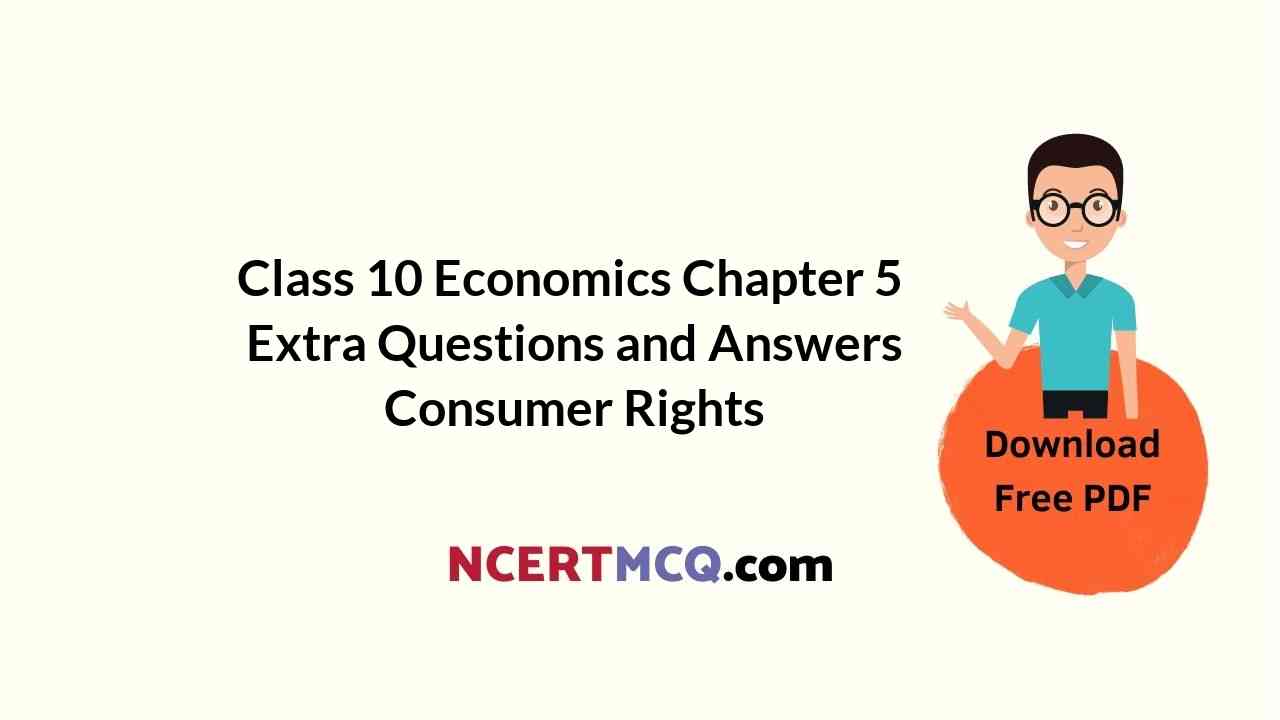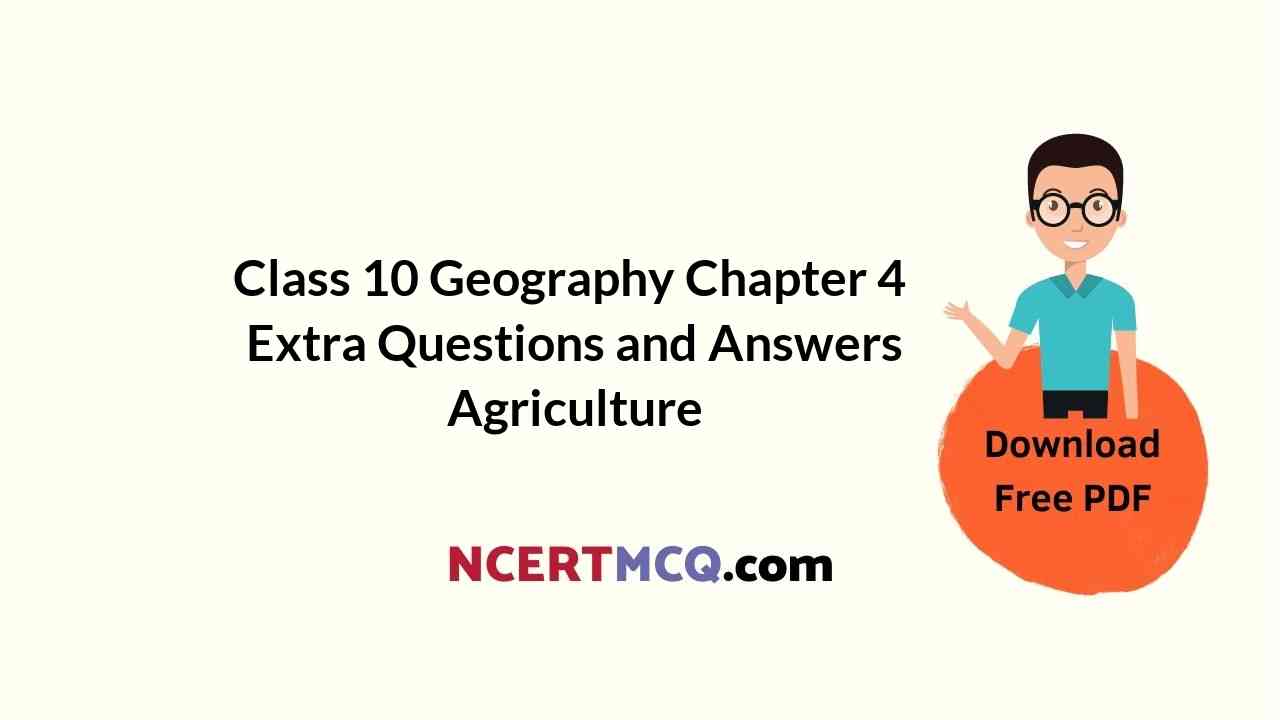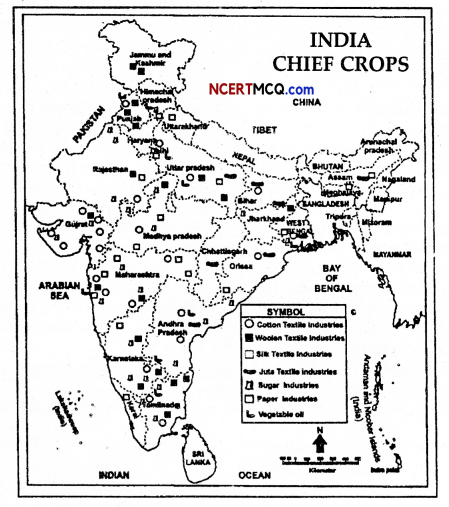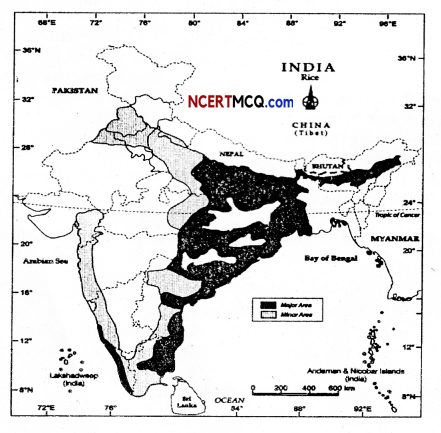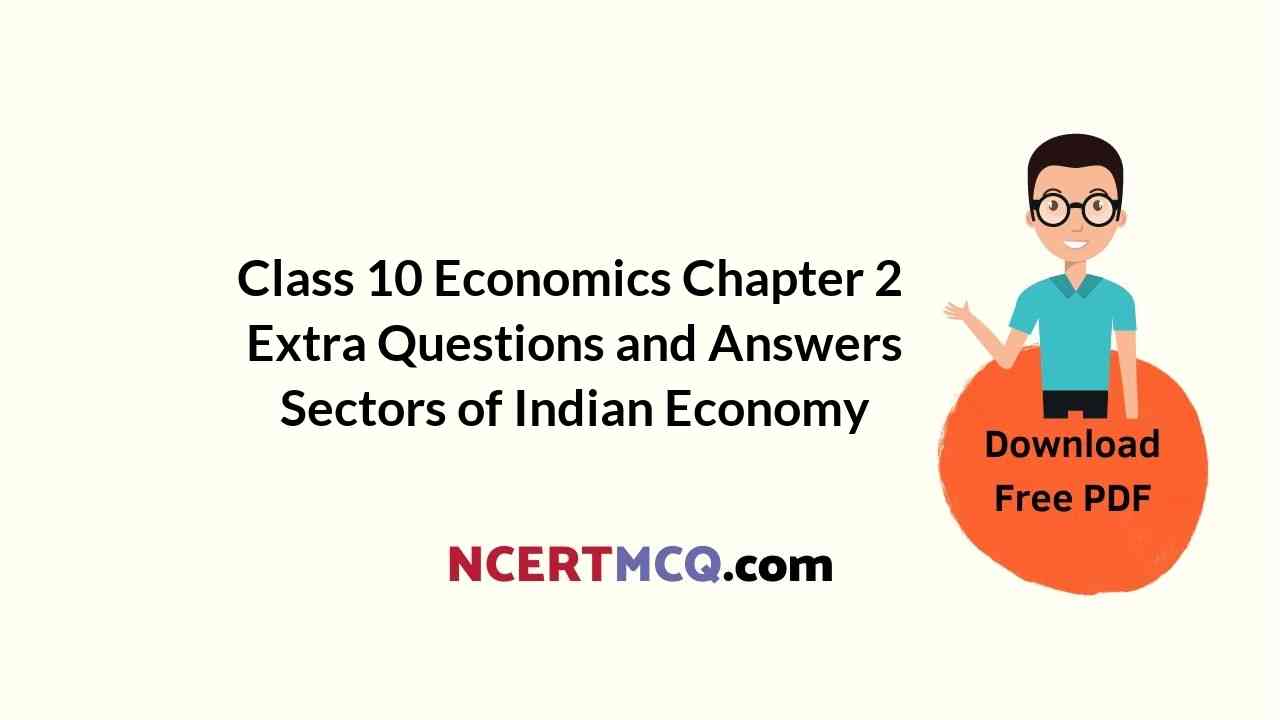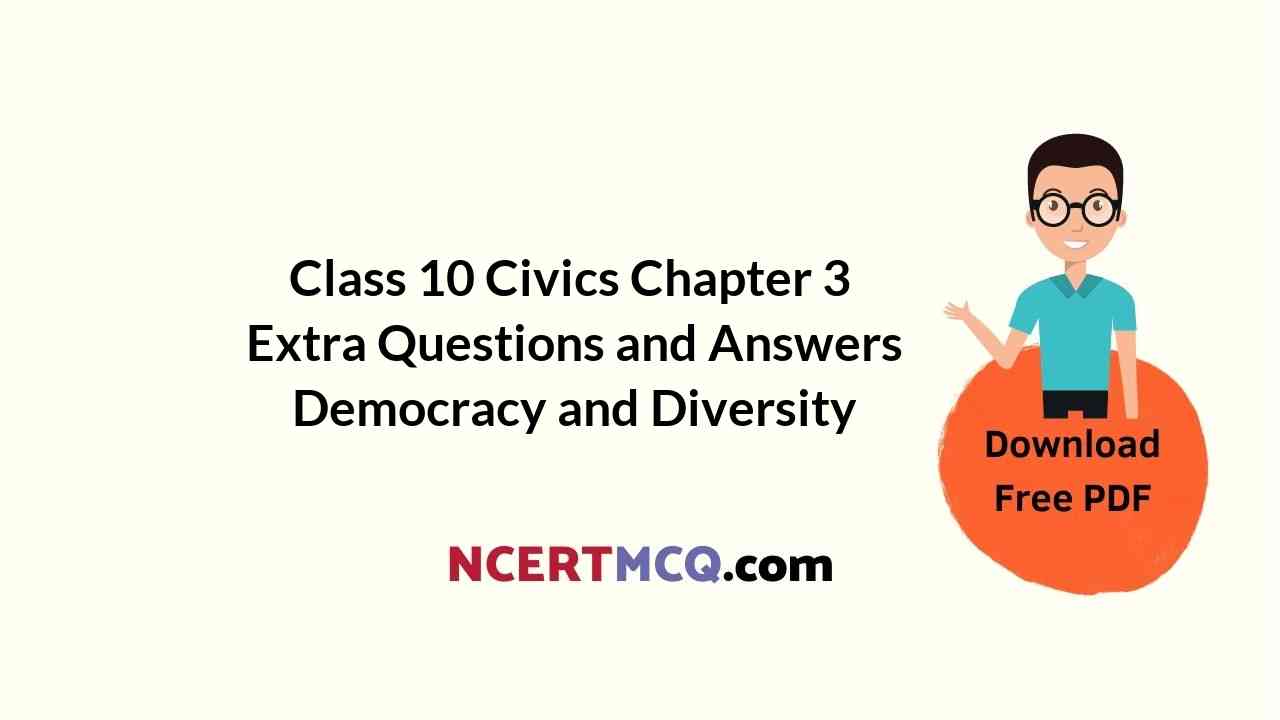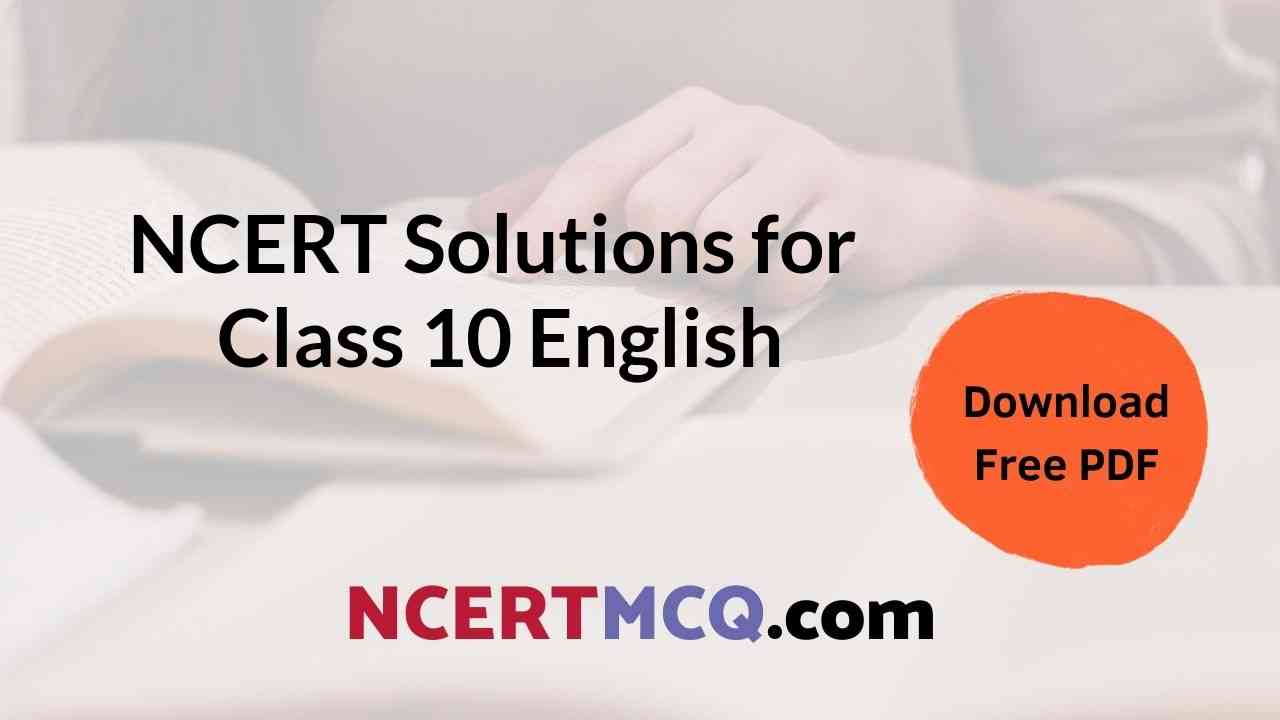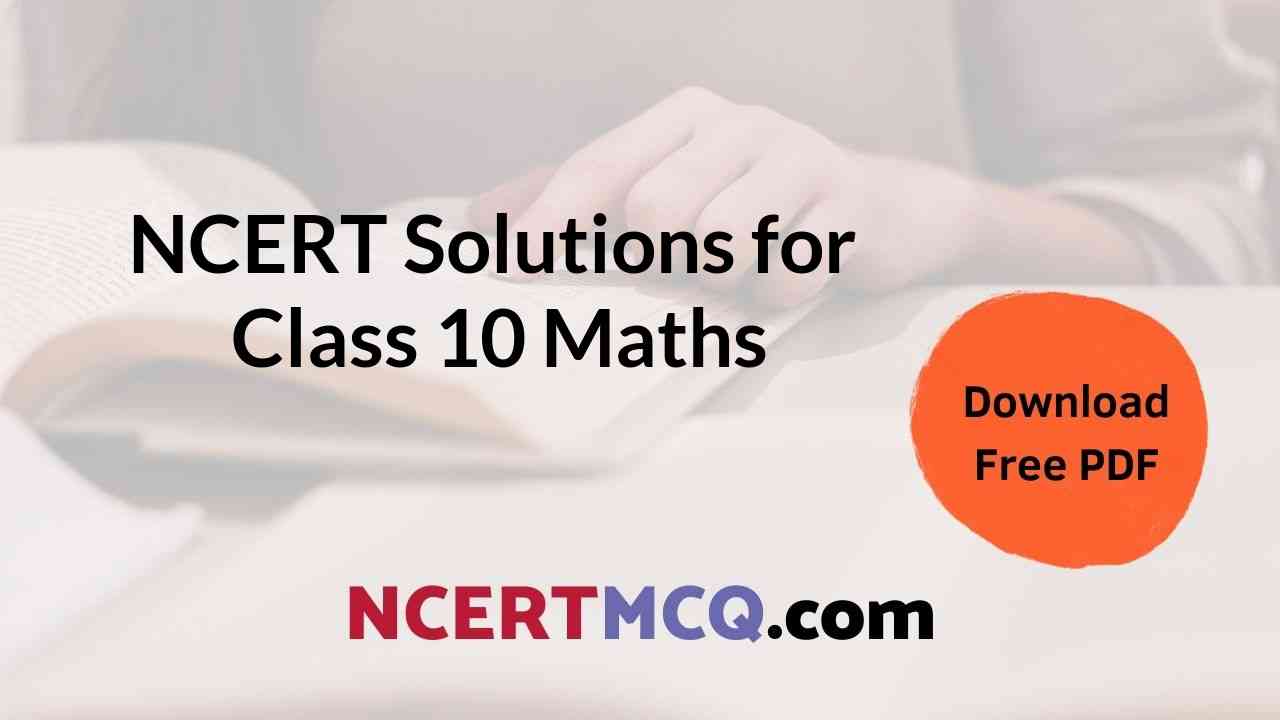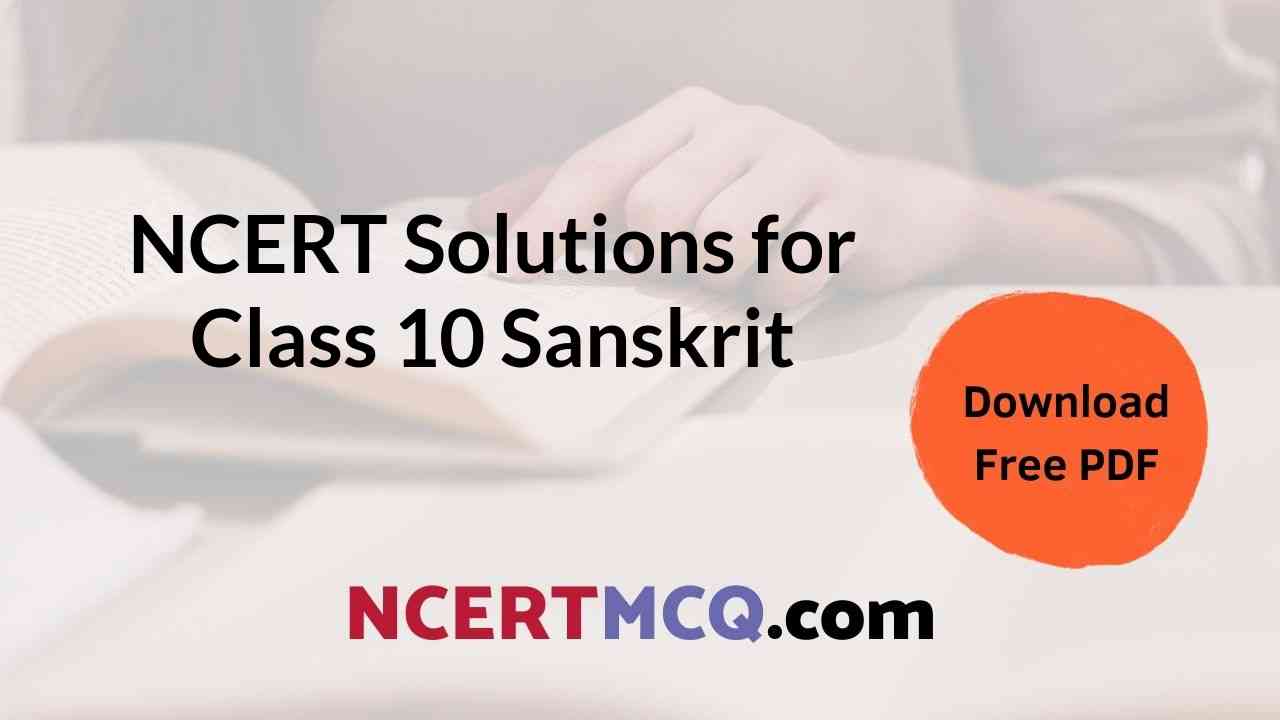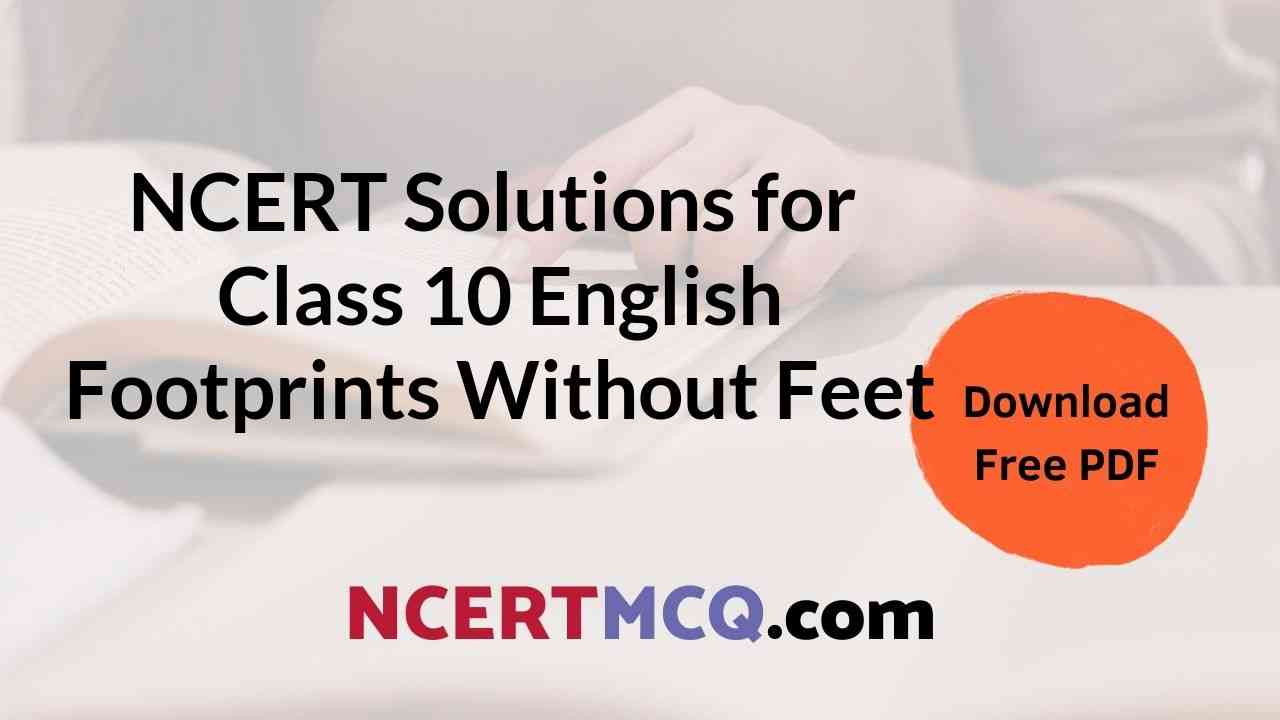Check the below NCERT MCQ Questions for Class 10 Economics Chapter 5 Extra Questions and Answers Consumer Rights Pdf free download. https://ncertmcq.com/extra-questions-for-class-10-social-science/
Consumer Rights Class 10 Extra Questions Economics Chapter 5
Extra Questions For Class 10 Economics Chapter 5 Question 1.
Which is the apex body of the consumer courts in our country?
Answer:
The National Consumer Commission.
Consumer Rights Class 10 Extra Questions Question 2.
Which is the most important consumer court?
Answer:
The District forum.
Consumer Rights Class 10 Questions And Answers Question 3.
In which year the Consumer Protection Act was enacted?
Answer:
In 1986.
Class 10 Economics Chapter 5 Mcq With Answers Question 4.
By which name was the BIS earlier known as?
Answer:
BIS was earlier known as the Indian Standards Institution.
Consumer Rights Class 10 Important Questions Question 5.
Where is the headquarter of the BIS?
Answer:
At New Delhi.
Consumer Rights Extra Questions Question 6.
What is DMI?
Answer:
DMI stands for the Directorate of Marketing.
![]()
Consumer Rights Class 10 Extra Questions And Answers Question 7.
Where was the Codex Alimentarious Commission Intelligence created?
Answer:
In 1963.
Consumer Rights Questions And Answers Question 8.
For what does ISO stand?
Answer:
ISO standas for the International Organisation for Standardisation.
Class 10 Economics Chapter 5 Questions And Answers Question 9.
When was the ISO established?
Answer:
In 1947.
Class 10 Economics Chapter 5 Important Questions Question 10.
What are the four basic consumer rights?
Answer:
- Choice,
- Information,
- Safety,
- Right to be heard.
Consumer Rights Important Questions Question 11.
When were the four basic consumer rights recognised?
Answer:
In 1962.
Questions On Consumer Rights Class 10 Question 12.
When is the World Consumer Rights Day celebrated?
Answer:
On 15th of March every year.
Cbse Class 10 Economics Chapter 5 Mcq Question 13.
Is it necessary to take professional help from a lawyer to file a complaint in the consumer court?
Answer:
No.
Cbse Class 10 Chapter Consumer Rights Objective Questions And Answers Question 14.
How many district courts are there. In our country?
Answer:
About 500.
![]()
Class 10 Chapter 5 Extra Questions Question 15.
In which country did the first consumer movement begin?
Answer:
In England.
Question 16.
Who is called as the father of consumer movement?
Answer:
Ralph Nadar.
Question 17.
Describe any four rights of the consumers.
Answer:
- Right to be informed,
- Rights to choose,
- Right to seek redressal,
- Right to represent.
Question 18.
For what the abbreviations APL and BPL stand?
Answer:
APL: Above Poverty Line.
BPL Below Poverty Line.
Question 19.
Where is International Organisation for standardization located
Answer:
Geneva.
Question 20.
On which day does India observe the National Consumer Day?
Answer:
24th December.
Question 21.
Write down the advantages of public distribution system.
Answer:
The public distribution system is very helpful preventing hoarding, black-marketing, overcharging. In addition to all these it also ensures food security to the poor.
Question 22.
What is meant by Agmark?
Or
Write down the functions of Agmark.
Answer:
Agmark is implemented under the Agricultural Product Act, 1937. This act was amended in 1986. Agmark is a scheme run by the Directorate of Marketing and Intelligence in the Ministry of Agriculture of the Government of India. Products like honey masala, etc. carry this AGMARK as the sign of purity.
![]()
Question 23.
What are the legal formalities for filing a complaint against a trader?
Answer:
There is no legal formalities for filing a complaint against a trader or a manufacturer in a consumer court. All one has to do is to write his or her complaint on a plain paper and attach the supporting documents like guarantee or warrantee card and cash memo and one can file this very simple complaint in a consumer court. Also there is no need to take any professional help from a lawyer as one can plead the case by oneself.
Question 24.
What do you know about the ISO.
Answer:
The ISO stands for the International Organization for Standardization. It is located in Geneva. It serves to provide a common reference standard at the international level. It is a non-governmental organisation. It was established in 1947. ISO’s work results in international agreements.
These are published as international standards. ISO 9000, ISO 6000, ISO 14000 and the like, indicate specific levels of standards for a particular industry or group of products or institutions.
Question 25.
What do you know about Codex Alimentarius Commission?
Or
Write down the functions of the Codex Alimentarius Commission.
Answer:
The Codex Alimentarius Commission was created in 1963. It is an international body for setting international food standards. This commission was actually created by the Food and Agriculture Organisation (FAO) and World Health Organisation (WHO). This commission is located in Rome, Italy.
The works of Codex Alimentarius Commission:
- It develops food standards.
- Prepares guidelines and codes of practices for production.
- Prepares guidelines and codes also for the international trade in food products.
Question 26.
Mention the organizations that provide certification of standardization in India.
Answer:
To protect the consumers from lack of quality and varying standards of goods; the Government has set mainly two institutions
- Bureau of Indian Standards (BIS)
- AGMARK, BIS caters to the industrial and consumer goods. On the other hand, Agmark is meant for the agricultural products.
![]()
Question 27.
Name the consumer courts at the district, state and national levels.
Answer:
Levels Consumers Courts
- District District court
- State State Consumer Commission
- National consumer commission.
Question 28.
Present a brief sketch on the history of the consumer movement.
Answer:
Consumer protection is not a new concept for India as references to the protection of consumer’s interests have also been presented in Kautilya’s Arthashastra Kautilya in his Arthashastra has given a detailed sketch of how consumers interests should be protected against the exploitation by trade and industry, underweight and measurement, adulteration. Punishment for these offences were also made in Kautilya’s Arthashastra.
However in recent era, the modern organised and systematic movement to safeguard the interest of consumers has developed in the late 1980s and early 1990s when the Indian Economy opened up its door for liberalisation and globalisation. At the world level, first consumer movement began in England after the II World War.
However, the modern declaration about the consumer’s rights was first:
Rights of safety: The Consumer Protection Act of 1986 protects the consumers against the marketing of goods and services hazardous to their life and property.
Rights of information: This Act provides the consumer every right of information. It includes quality, quantity potency purity standard and also the price of the goods.
Right to choose: This Act of 1986 provides assurance of access to variety Of goods and services at competitive price. By this act the consumer is assured of satisfactory quality and service at a fair price.
Right to be heard: This Act clearly states that the consumer’s interests should receive due consideration at appropriate forums relating to consumer welfare.
Right to seek redressal: The Act of 1986 provides the right to seek redressal against unfair trade practices and the exploitation of consumers and rights to fair settlement of grievances. Act also includes the rights to knowledge about goods and issues relating to consumers welfare.
Question 29.
Mention and discuss numerous measures with regard to the protection of consumers interest.
Answer:
The following are measures with regard to the protection of consumers interests.
- The legislative measures include enactment of the Consumer Protection Act.
- The administrative measures include PDS which distributes essential commodities to the people directly.
- On the other hand technical measures consist of the standardization of the products.
To protect the rights of the consumers the Government of India has enacted the Consumer Protection Act in 1986. This Act provides for the establishment of Consumer Disputes Redressal Agencies at district, state and also at national levels. This Act has led to setting up of separate Department of Consumer Affairs in central/ and state governments, which focus exclusively on the rights of the consumers as enshrined in the Act.
Also there are no legal formalities for filing the complaint. One can write the complaint on a plain paper and attaching supporting documents like guarantee or warantee card and cash memo with the complaint can submit it in the district consumer court. Consumer courts have settled nearly 77% of the cases.
Moreover, Indian Government has taken the following steps to protect the rights of a consumer
Apart from ensuring food security to the poor as a part of certain administrative measures, the Indian Government has also started public distribution system to prevent hoarding, black marketing and overcharging by traders.
The other important measure taken by the Government to protect the rights of a consumer is standardisation of products. It protects the consumers from lack of quality:
The Government of India has established the Bureau of Indian Standards to make sure about the quality of a product.
While BIS caters to the industrial and consumer goods, the Agmark is meant for the agricultural products.
Agmark is implemented under the Agricultural Produce Act, 1937. This Act was again amended in 1986.
For setting international food standards, there is a similar body called Codex Alimentarious Commission. This commission was created in 1963 by the Food and Agriculture Organisation (FAO) and World Health Organisation (WHO).
![]()
Question 30.
What are various ways in which a consumer is exploited?
Answer:
A consumer is exploited by the traders in various ways, some very common ways of this exploitation are the following
Underweight and under measurements: It is a very common practice by the traders not to weigh and measure the things properly and correctly.
Substandard quality: Many of the times goods sold are substandard quality. For example, selling of expired medicines and supply of deficiency or defective home appliances have generally become the regular grievances of consumers.
High Price: Very often the traders charge a price higher than the prescribed retail price
Duplicate articles: Many times in the name of genuine parts and goods, fake and duplicate items are sold to the consumers.
Adulteration: In costly items like ghee, oil, spices etc. adulteration is very commonly practised to make higher profit in a undue manner. It makes the customers lose their money as well as their health.
Lack of safety devices: Many of the times electrical devices and various electronic goods are sold without proper safeguard.
Unsatisfactory after-sale services: Many of the times suppliers do not provide the satisfactory after-sale services despite proper payments. It creates unnecessary tension to the customers.
Objective Type Questions
1. Put (✓) or (✗) before the following sentences
Question 1.
Codex International is located in Rome.
Answer:
(✓)
Question 2.
Rome is the capital of United Kingdom.
Answer:
(✗)
Question 3.
BIS was earlier known as ISCO.
Answer:
(✗)
![]()
Question 4.
ISO was established in 1947.
Answer:
(✓)
Question 5.
ISO is located in Geneva.
Answer:
(✓)
Question 6.
The consumers have the right to be protected against marketing of goods and services.
Answer:
(✓)
Question 7.
You cannot file your complaint to the consumer court without legal support.
Answer:
(✗)
Question 8.
You yourself can plead your case in the consumer court.
Answer:
(✓)
Question 9.
There are about 200 district consumer courts in our country
Answer:
(✗)
Question 10.
National Consumer Commission is located in Pune.
Answer:
(✗)
Question 11.
In India the concept of consumer protection is absolutely new.
Answer:
(✗)
Question 12.
The level of consumer consciousness in our country is generally low.
Answer:
(✓)
2. Match the following list
| List A | List B |
| (i) National Consumer Commission | Rome |
| (ii) Codex Alimentarius Commission | Geneva |
| (iii) International Organisation for Standardisation | Delhi |
| (iv) Bureau of Indian Standards | New Delhi |
Answer:
| List A | List B |
| (i) National Consumer Commission | Delhi |
| (ii) Codex Alimentarius Commission | Rome |
| (iii) International Organisation for Standardisation | Geneva |
| (iv) Bureau of Indian Standards | New Delhi |
3. Fill up the following blanks with suitable words:
(i) In India liberalization of economy began in early…………………………..
Answer:
1990s.
![]()
(ii)The Consumer Protection Act was enacted in …………………………. .
Answer:
1986.
(iii)Agricultural Product Act, 1937, was amended in …………………………. .
Answer:
1986.
(iv) Codex Alimentarious Commission was created in…………………………. .
Answer:
1963.
